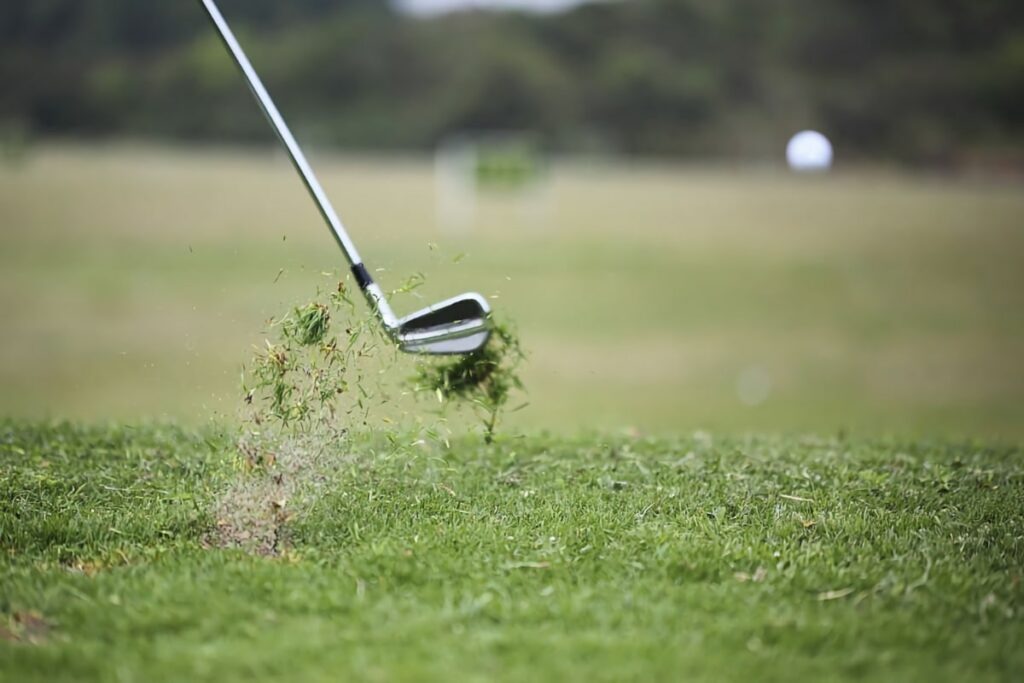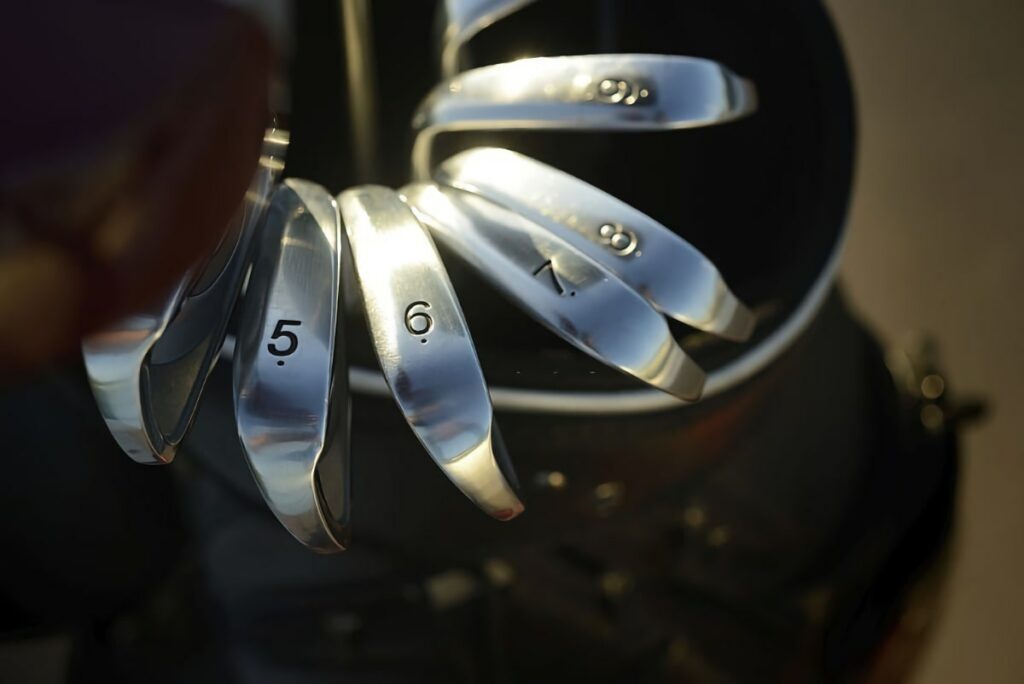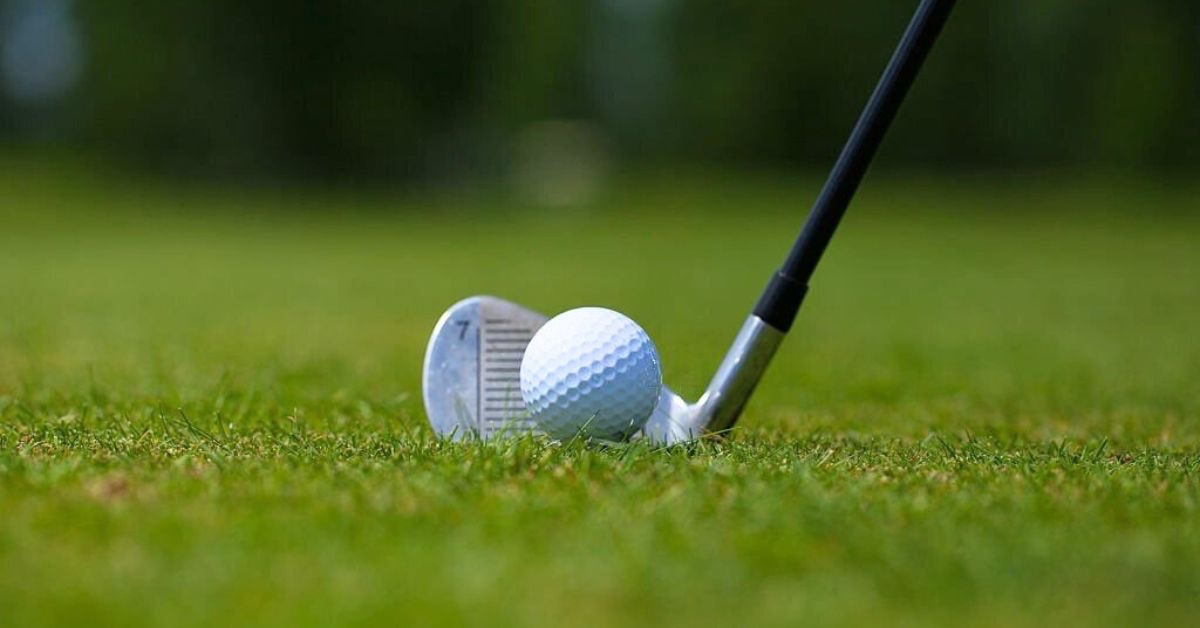With irons, distance gapping is vital. But, not everyone wants to fork out for new clubs!
Fortunately, there’s a relatively cheap and easy way to alter distances — bending at the hosel to alter the natural loft angle of the clubface.
In this article, you’ll learn everything about bending irons 2 degrees strong.
Also, I’ll cover the reasons to avoid bending clubs beyond 2 degrees. And for those who wish to bend their clubs at home, I’ll share the entire process from scratch.
Bending Irons 2 Degrees Strong
Bending irons 2 degrees strong will reduce the launch angle, increase the ball speed, and add about 5-10 yards of distance. It’s recommended to bend golf clubs 2 degrees at most, any more will significantly reduce the bounce angle and increase the level of offset.
Essentially, bending your irons 2 degrees stronger is a useful technique to add a few extra yards to clubs lacking distance. That way, you can fine-tune your distance gapping between each club, for better distance control on the golf course.
However, you should avoid bending irons more than 2 degrees. This can risk stress on the hosel, causing it to break. Equally, bending an iron too strong can affect the iron’s natural offset at address, pushing the leading edge further behind the hosel.
However, you should avoid bending irons more than 2 degrees. Not only can it risk breaking the hosel, but it will also affect the bounce angle and offset.

Why Bend Your Irons?
The main reason to bend your irons is to change the loft angle, altering the distance.
Essentially, the loft of your irons directly impacts how far the ball will travel — provided you swing with the same speed and make similar contact with each club.
With irons, 1 degree of loft equals about 2-4 yards of distance. So, by altering the loft angle, you can add or remove yards from a club swung at the same speed.
PRO TIP: You can also bend your irons in the perpendicular plane to alter the lie angle, making the club flatter or more upright.
Bending Strong vs Weak
So, what’s the difference between bending a golf club strong, versus weak?
In short, bending your irons strong is a term used for reducing the loft. Conversely, bending your irons weak means increasing the amount of loft on the club.
For instance, some golfers feel as though all their mid-irons go the same distance. To differentiate the 6-iron from the 5-iron, you might choose to bend your 5-iron a couple of degrees strong. In effect, this will add 5-10 yards of distance.
Likewise, you can achieve similar gapping by bending the 6-iron weaker.
Ultimately, you want to achieve even yardage gaps between your clubs. According to Tony Covey of MyGolfSpy, it’s best to aim for gaps between 10 and 15 yards.

How Strong Should You Bend Your Irons?
Typically, you shouldn’t bend your irons more than 2 degrees strong. Bending irons beyond this limit is likely to impact the bounce angle and the offset of the club.
When you alter the loft angle of a golf club, the relative angle between the leading edge and the bottom of the sole — AKA the bounce angle — also changes. Essentially, this changes the way the sole of the club interacts with the turf.
For instance, bending an iron 2 degrees strong will move the leading edge closer to the turf, reducing the bounce angle. This can make the club less forgiving with slightly heavy shots, and cause it to dig into the turf more at impact.
In general, the bounce angle is more of a factor to consider when bending wedges, as turf interaction becomes more vital for delicate shots around the greens.
Also, bending an iron stronger increases the offset. In short, this is the position of the leading edge relative to the hosel and can change the look and feel of your irons.
Takeaway: When an iron is bent stronger, bounce angle decreases and offset increases.That said, the hosel itself is actually resistant to more bend before the risk of breaking.
Having said that, you can bend an iron more than 2 degrees without damaging the integrity of the hosel. Nevertheless, if you’re looking to change the loft angle beyond a couple of degrees, it’s best to consult with a golf professional for advice.
Check out the video below for a good indication of the effects of changing the loft angle between 2 and 4 degrees strong. Hint: 2 degrees is plenty!
How to Bend Golf Irons
While many prefer to have the loft angles on their golf clubs adjusted by a professional fitter, it’s possible to do it at home if you’re looking to save time and money!
You’ll need three main tools to bend an iron:
- Bending machine
- Bending bar
- Electrical tape
Let’s start by setting the club up correctly in the bending machine.
1. Check the Grooves
Firstly, set the iron in the bending machine.
Then, check that the grooves on the clubface are running parallel to the machine. This makes sure the club is aligned correctly in the machine before the bending process.
PRO TIP: Place some electrical tape on the club head to prevent any scratches from the bending machine during the process.
2. Position the Bending Bar
Next, it’s time to put the bending bar in the machine.
When bending to adjust the loft angle of an iron, position the bending bar so that it sits perpendicular to the club head.
If you’re bending to alter the lie angle, position the bending bar on the same plane as the club head — i.e. parallel to the clubface.
Then, clamp the bending bar in the center of the hosel. The lower you can clamp onto the hosel the better, but it can be difficult to get enough flexibility if it’s too low.
PRO TIP: If you’re adjusting both lie angle and loft angle, consider bending at a 45 degree angle to reduce the number of bends.
3. Bend the Club
Finally, it’s time to bend the iron to the chosen angle.
The most effective bending technique is to apply smooth, gradual pressure on the bending bar. This ensures the club bends, without risking a break at the hosel.
Ease in and out of the bend, and check to see if you’ve reached your chosen angle.
PRO TIP: Avoid fast, jerky movements when bending the club, as this can risk breaking the hosel.
For the full process, check out the video below by the Mobile Clubmaker:
Conclusion
In summary, bending irons 2 degrees strong will add anywhere from 5 to 10 yards of distance when swung at the same speed.
Put simply, altering the loft angle is a great way to differentiate the gapping of your irons if you feel as though they strike the ball at similar distances.
Ultimately, it’s recommended that you don’t bend irons stronger than 2 degrees. Any more, and you’ll significantly reduce the bounce angle and increase the offset.


